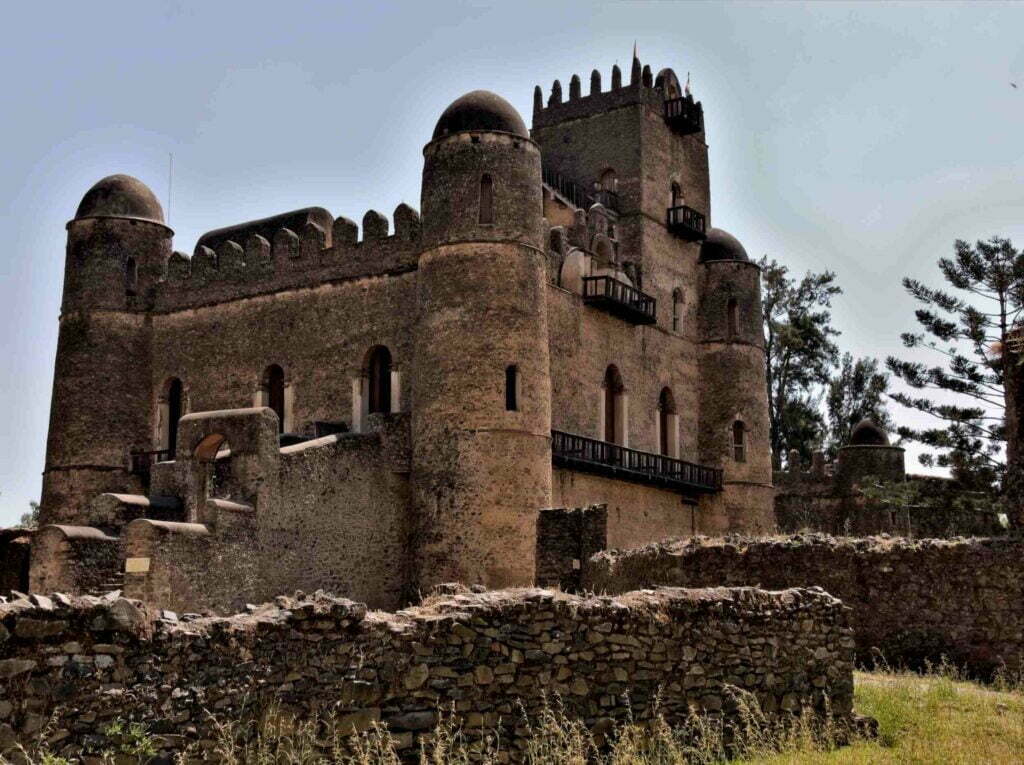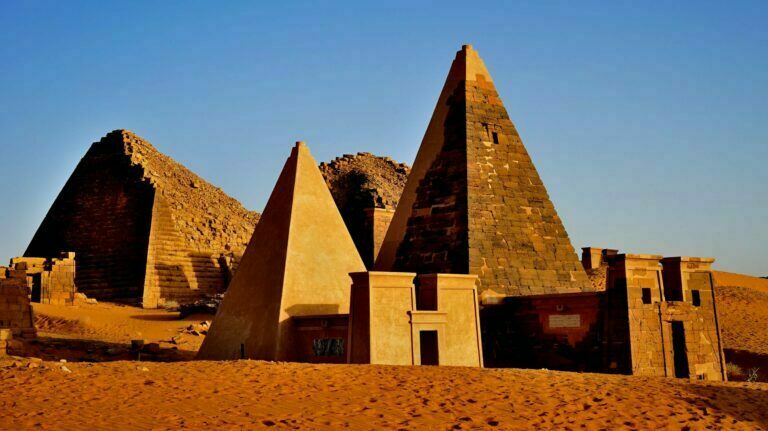The Aksum Empire, alternatively known as the Kingdom of Aksum or Axum, represents an ancient civilization located in present-day Ethiopia and Eritrea. Situated near Ethiopia’s northern border, the city of Aksum serves as a poignant reminder of ancient Ethiopia’s heart. Flourishing from the 1st to the 13th centuries AD, the Aksum Kingdom held a formidable position between the Eastern Roman Empire and Persia.
Aksum Empire Facts
Archaeological remnants, including colossal obelisks, stelae, royal tombs, and ancient castle ruins, underscore the kingdom’s historical significance. Despite its decline in the 10th century, Aksum retained symbolic importance as the site where rulers were crowned.
Presently, governance over the remnants of the Aksumite empire is shared among Ethiopia, Eritrea, Djibouti, Somalia, and Somaliland. Through strategic endeavors such as farming, cattle-raising, and trade route control, Aksum thrived by exchanging gold and ivory for luxury goods, contributing to Ethiopia’s cultural identity.
Kingdom of Aksum
The decline of Aksum in the 7th century coincided with the ascendancy of Muslim Arab traders and the influence of rival native groups. However, in the 13th century, remnants of Aksum played a pivotal role in founding the extensive kingdom of Abyssinia.
Although diminished, Aksum persists as a historical area in the southern part of its former grandeur. The name “Aksum” potentially originates from a blend of local terms: “Agew” for water and Ge’ez for official, “shum,” possibly referring to ancient rock cisterns near the capital.
Aksum Definition
The Ethiopian empire of Aksum, also known as Abyssinia, now adopts the title “Negusa Negast,” or “King of Kings.” The region boasts a rich history, with agrarian populations inhabiting the land since the Stone Age. The growth of the Aksum Kingdom in the first century CE was attributed to fertile farmland, consistent monsoon rains, and control over significant trade routes connecting Egypt, the East African coast, and southern Arabia. With successful cultivation of crops like wheat, barley, millet, and teff, along with cattle herding on the Savannah grasslands, Aksum developed a robust economy.
This prosperity contributed to its crucial role as a trade hub between the eastern and western worlds, connecting distant regions like Rome and India. The capital city of Aksum’s historical importance is highlighted by its association with the Ark of the Covenant. Aksum’s strategic location along the Red Sea allowed it to dominate the international trade market, making it a major player in the ancient world’s economic landscape.
Aksum Ethiopia History
Aksum, located in northern Ethiopia, stands as a testament to the ancient Kingdom of Aksum, marked by tall, carved obelisks that are relics of its rich history. Many of these obelisks are situated in the northern part of Stelae Park, including a colossal fallen pillar. The city is renowned for St. Mary of Zion, an ancient Christian church and pilgrimage site believed to have housed the biblical Ark of the Covenant.
Despite its political decline in the 10th century, Aksum retained symbolic significance as Ethiopian emperors continued to be crowned there. Located in the highlands of northern Ethiopia, Aksum played a pivotal role as a crossroads of three continents—Africa, Arabia, and the Greco-Roman World. The ruins encompass a vast area of the Tigray Plateau, featuring impressive monuments like monolithic obelisks and royal tombs.
Notable inscriptions on stone tablets, including trilingual texts in Greek, Sabaean, and Ge’ez, provide valuable historical insights. The introduction of Christianity led to the construction of churches, such as Saint Mary of Zion, believed to house the Ark of the Covenant. Axum, alternatively spelled Aksum, is a town in the Tigray Region of Ethiopia, holding historical significance as the capital of the Aksumite Empire.
This maritime and trading power ruled regions extending into West Asia, including Saudi Arabia and Yemen, from around 400 BCE to the 10th century. Located in the Central Zone of the Tigray Region, Axum’s history is entwined with the Aksumite Empire’s decline, influenced by factors such as conversion to Christianity, geopolitical shifts, and challenges to Red Sea trade routes.
Aksumite Empire
The Aksumite Empire faced a gradual decline after the 7th century, partly due to conflicts with the Persians and Arabs over trade routes. Empress Gudit eventually destroyed the Aksumite Empire in the 10th century, leading to the southward migration of some Axumites and the decline of their traditional way of life. As the empire lost power and influence, Axum’s population dwindled, akin to the fate of other cities distanced from major global events.
The shift of the Ethiopian Empire’s power southward to the Amhara region marked this transformative period. Despite its decline, Axum continues to hold historical importance, and its name appears on indigenous maps of the northern Horn of Africa from the 15th century. In the sixteenth century, Adal leader Ahmed ibn Ibrahim al-Ghazi led the conquest of Axum.
Ethiopia Axum
The Aksum Empire, also known as the Kingdom of Aksum or Axum, was an ancient kingdom that existed in what is now Ethiopia and Eritrea. It emerged around the first century AD and is believed to have reached its height between the fourth and seventh centuries AD.
The Aksumite civilization was one of the great civilizations of the ancient world and played a significant role in the trade between the Roman Empire, the Indian subcontinent, and other regions of Africa. Key features and aspects of the Aksum Empire include:
1. Geography
- Location: Aksum was located in the northern part of the Ethiopian Highlands and parts of present-day Eritrea.
- Strategic Position: Its location gave it strategic importance for trade routes connecting Africa, the Mediterranean, and Asia.
2. Capital City: The capital city of the empire was Aksum (Axum), which served as a major hub for trade and cultural exchange.
3. Economic Prosperity:
- Trade Hub: Aksum was a major trading power, facilitating commerce between the Roman Empire, Persia, India, and other regions.
- Exports: The empire was known for exporting goods such as ivory, gold, and exotic animals.
4. Cultural Achievements:
- Language: Ge’ez, an ancient South Semitic language, was used in Aksum. It later evolved into the modern-day Ge’ez script.
- Religion: Aksum was one of the earliest kingdoms to adopt Christianity. The Aksumite Empire played a role in the spread of Christianity in the region.
5. Monumental Architecture: Aksum is famous for its stelae, obelisk-like structures made of stone. The most notable is the Obelisk of Aksum.
6. Aksumite Civilization and Decline:
- Civilization: The Aksumites had a complex society with advanced architecture, including palaces and water systems.
- Decline: The decline of Aksum is not fully understood, but factors such as shifts in trade routes, environmental changes, and the rise of Islamic powers in the region may have contributed.
7. Legacy:
- Heritage: Aksum is a UNESCO World Heritage Site, recognizing its historical and cultural significance.
- Religious Influence: The introduction of Christianity during the Aksumite period has had a lasting impact on the cultural and religious identity of Ethiopia.
The Aksum Empire holds a unique place in history for its contributions to trade, culture, and the early adoption of Christianity in the African context. The remnants of its civilization continue to be studied and preserved as part of Ethiopia’s rich historical heritage.






